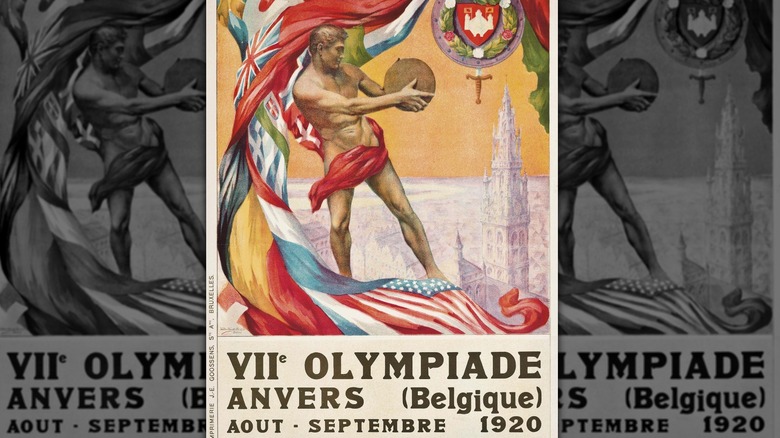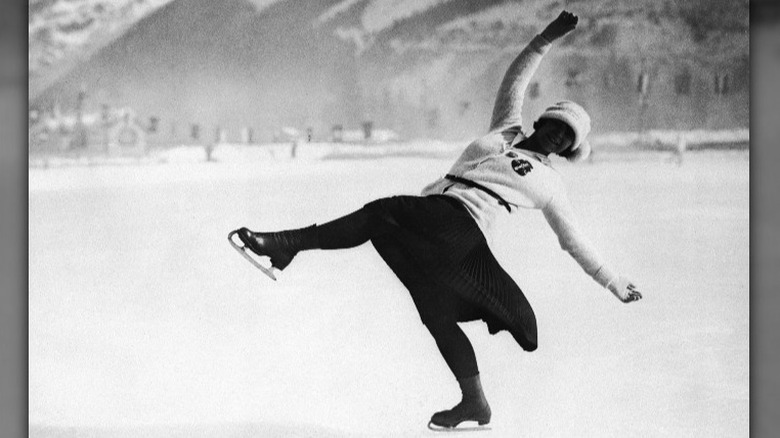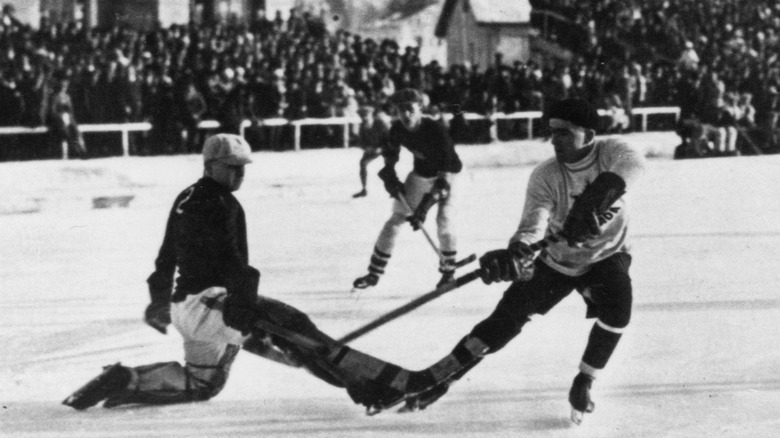Why Figure Skating And Ice Hockey Were Originally In The Summer Olympics
The year is 1894. You are seated in the Sorbonne University auditorium in Paris, France, at the very first Olympic Congress, surrounded by "congenial, well-meaning second-rank intellectuals, academicians and bureaucrats" (or so the historian Richard D. Mandell describes the crowd of aspiring Olympic magnates, per Smithsonian Magazine). A man with an absurdly large mustache is delivering an ad-hoc exhortation on the immortal virtues of figure skating, which he clearly considers a matter of great severity and prescience.
It was difficult to argue with Pierre de Coubertin, founder of the modern Olympics, when he fiercely advocated for figure skating's inclusion in the inaugural Olympic Games. "[Figure skating is a sport so] amateur in nature and possessed a sporting dignity so frank and pure that its exclusion from the Olympic programme robs it of strength and value," the International Olympic Committee website recalls from de Coubertin's argument in favor of the sport.
De Coubertin did not initially succeed in his push for a winter version of the games, but he did succeed in getting figure skating on the program by 1908.
The 1908 Olympics in London: Figure Skating's 'Sporting Dignity'
Figure skating was a winter sport that generally took place outdoors in freezing temperatures, and the 1896 Olympic Games were scheduled for the moderate springtime weather of Athens in April (via the International Olympic Committee). Nonetheless, since figure skating could also be held indoors, by the time the 1908 Olympic Games in London rolled around, the Olympic Committee had found a way. Figure skating was included in the 1908 Summer Olympics in London, with competitions including men's singles, women's singles, and mixed pairs, as NBC Olympics reports.
The Olympics were a young tradition, and organized sports had only recently come in vogue and were still rising to their modern level of institutional recognition (via Smithsonian Magazine). The Summer Olympics were a tremendous feat of extraordinary planning, and initially, there were no Winter Olympics at all. Nonetheless, the sport "so frank and pure" as figure skating must be included somehow, and another sport was becoming all-the-rage: ice hockey.
After a brief omission from the 1912 Olympic Games, figure skating was again included in the 1920 Summer Olympics. This time, it shared the rink.
Ice Hockey in Antwerp and the New Winter Games
Ice hockey was first included in the 1920 Olympics in Antwerp, where seven hockey teams (representing Canada, Sweden, Switzerland, Belgium, Czechoslovakia, France, and the United States) faced off in high-stakes seven-player matches (via the International Olympic Committee). Ice hockey was a relatively new and increasingly popular sport, and its inclusion in the Antwerp games was a success, albeit not one that was easily achieved.
According to the IOC, it wasn't easy to create an artificial ice rink to survive the August sun in Antwerp with 1920s technology. Instead, the figure skating and ice hockey competitions were held in advance of the August games, competing in April 1920 at Antwerp's Palais de Glace. This arrangement eventually led to the creation of the first Winter Olympic Games at Chamonix in 1924. The Winter Olympics were such a success that the IOC made them a permanent fixture. We've been enchanted by the best of figure skating and enraged by the worst hockey fouls while watching the triennial Winter Games ever since.


